A. Lange & Söhne Celebrates Ferdinand Adolph Lange’s 200th With 200 Platinum 1815s
February 18 was an eventful day, both in 1815 when Ferdinand Adolph Lange first saw the light of day in Dresden, Germany, and in 2015 when A. Lange & Söhne celebrated the landmark date with a limited edition platinum 1815 model.
The bust of Ferdinand Adolph Lange adorning Glashütte’s market square was decorated with flowers and mindings from the city and its inhabitants on February 18, 2015
While Dresden’s illustrious history has boasted many watchmakers of historical stature, Ferdinand Adolph Lange was the one that brought world renown to the city of Glashütte by establishing his factory there (which led to the establishment of an entire watch industry in the German city), and also brought work and prosperity to the poverty-stricken region.
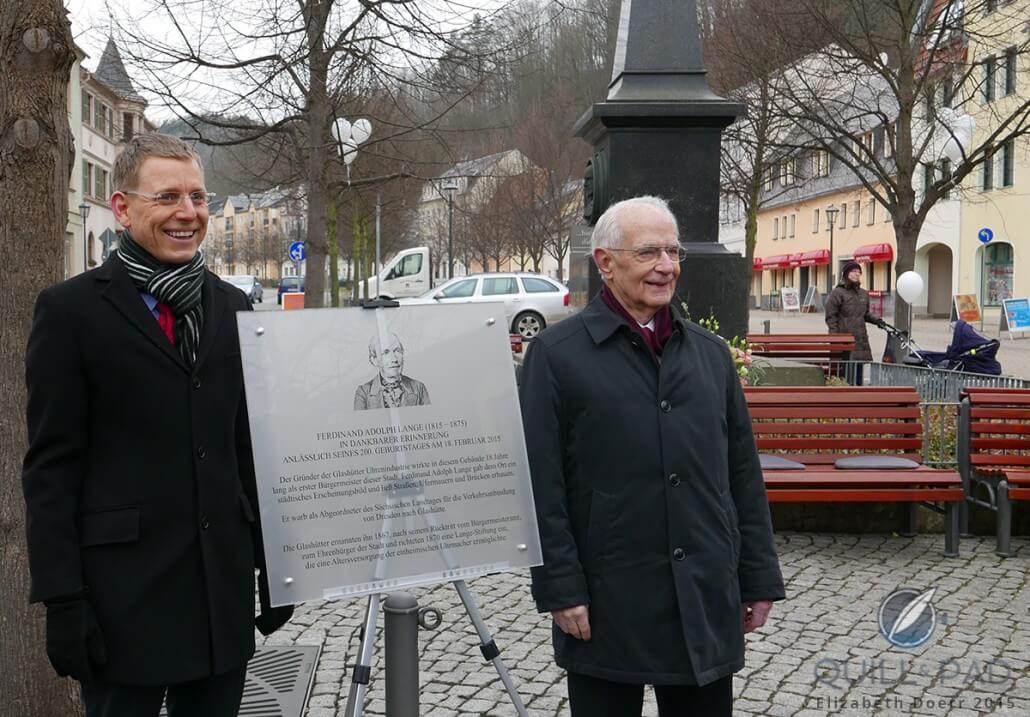
Glashütte Mayor Markus Dressler (left) and Walter Lange unveil a new plaque commemorating the 200th anniversary of Ferdinand Adolph Lange’s birthday
In Glashütte, there is a bust of Ferdinand Adolph Lange right on the town’s central market square. And it is right there that the entire city turned out on the morning of February 18, 2015 to honor Lange’s memory and pay respects to his deep meaning for the people of Glashütte two centuries later.
A few people I know who work for other local watch brands like Nomos and Tutima Glashütte told me it was “only natural” that they would come out for the short service presided over by Glashütte’s mayor Markus Dressler. “Without Ferdinand Adolph Lange there would be no watch industry in Glashütte for us to work in,” several people affirmed to me that morning, all using nearly the exact same wording.
Ferdinand Adolph Lange’s 90-year-old great-grandson Walter Lange spoke of rough beginnings and prosperous endings, while A. Lange & Söhne CEO Wilhelm Schmid elegantly pointed out what an open-minded and philanthropic person Lange was. One such instance was the fact that he also served as Glashütte’s first mayor from 1848 through 1866; he did this above all to ensure that streets and bridges would be built in the city.
Lange also served as a member of parliament in the Saxon state legislative assembly from 1869 through 1875, this time to certify that a proper road and train tracks would be built through to Glashütte from Dresden, thereby connecting the industrious town located in the remote Ore Mountains (Erzgebirge) to the German state’s capital city.
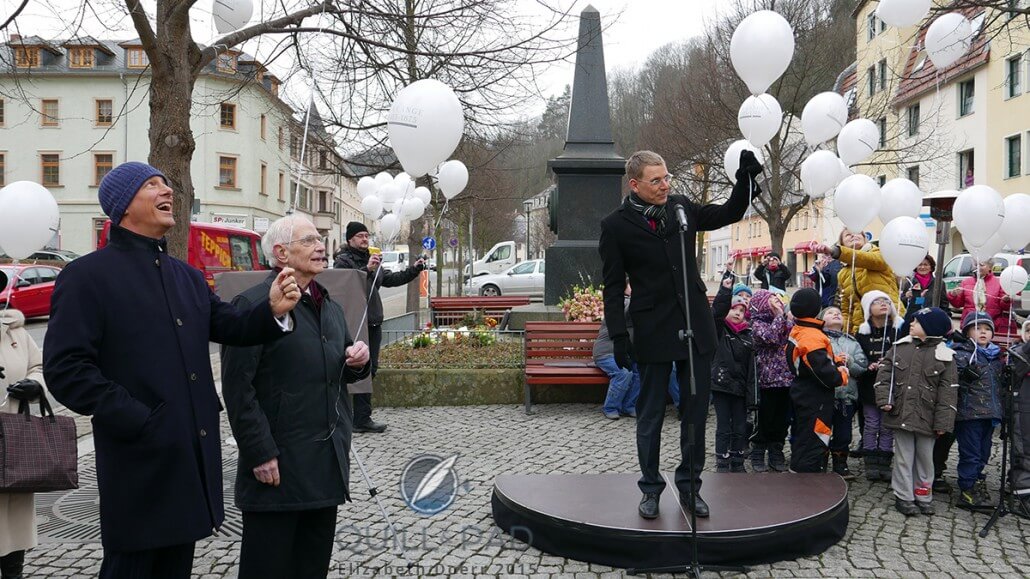
Lange & Söhne CEO Wilhelm Schmidt, Walter Lange and Glashütte mayor Markus Dressler sent off 200 balloons in Ferdinand Adolph’s memory along with townspeople and guests on February 18, 2015
Ferdinand Adolph Lange was named an honorary citizen of Glashütte in 1867, and to this day he remains the city’s most important figure.
Saxony’s path to international watchmaking: a museum exhibition
One of the institutes that helped shape timekeeping in Saxony, ultimately turning the region into a baroque scientific powerhouse, was Dresden’s Mathematisch-Physikalischer Salon (MPS), founded by elector August the Strong in 1728.
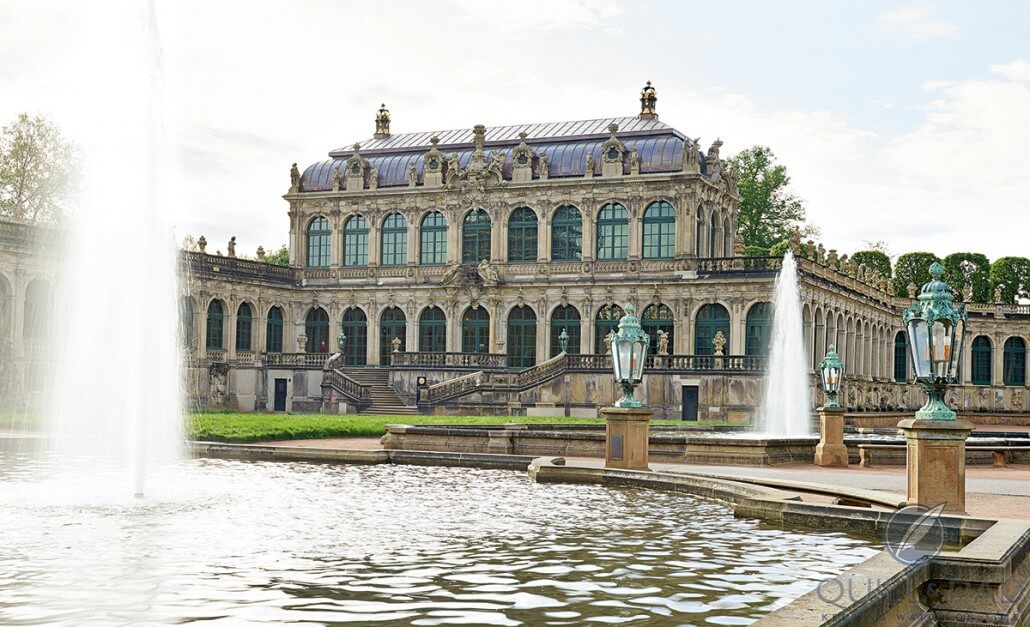
The Royal Cabinet of Mathematical and Physics Instruments museum in Dresden, which is housed in the historic Zwinger along with other state museums
Though the name of the institute housed within Dresden’s state museums in the historical Zwinger building may be a mouthful (it translate as Royal Cabinet of Mathematical and Physics Instruments), it remains one of the most important museums for historical scientific instruments in the world.
The Royal Cabinet of Mathematical and Physics Instruments opened a new exhibition in honor of the 200th anniversary of Ferdinand Adolph Lange’s birth in 1815 called “Simple and Perfect: Saxony’s Path into the World of International Watchmaking.”
Recently refurbished (with the help of A. Lange & Söhne), the museum’s permanent collection, boasting great character and quality, contains precision instruments, astronomical devices for maritime navigation, and various tools and scientific instruments that August and his predecessors (and successors) collected.
One of the more interesting historical aspects of it is the fact that its “inspectors” (who acted as directors and/or curators) were responsible for not only maintaining the instruments, but also to preserve and maintain Saxony’s official time signal. The MPS became a center for observational astronomy in 1780.
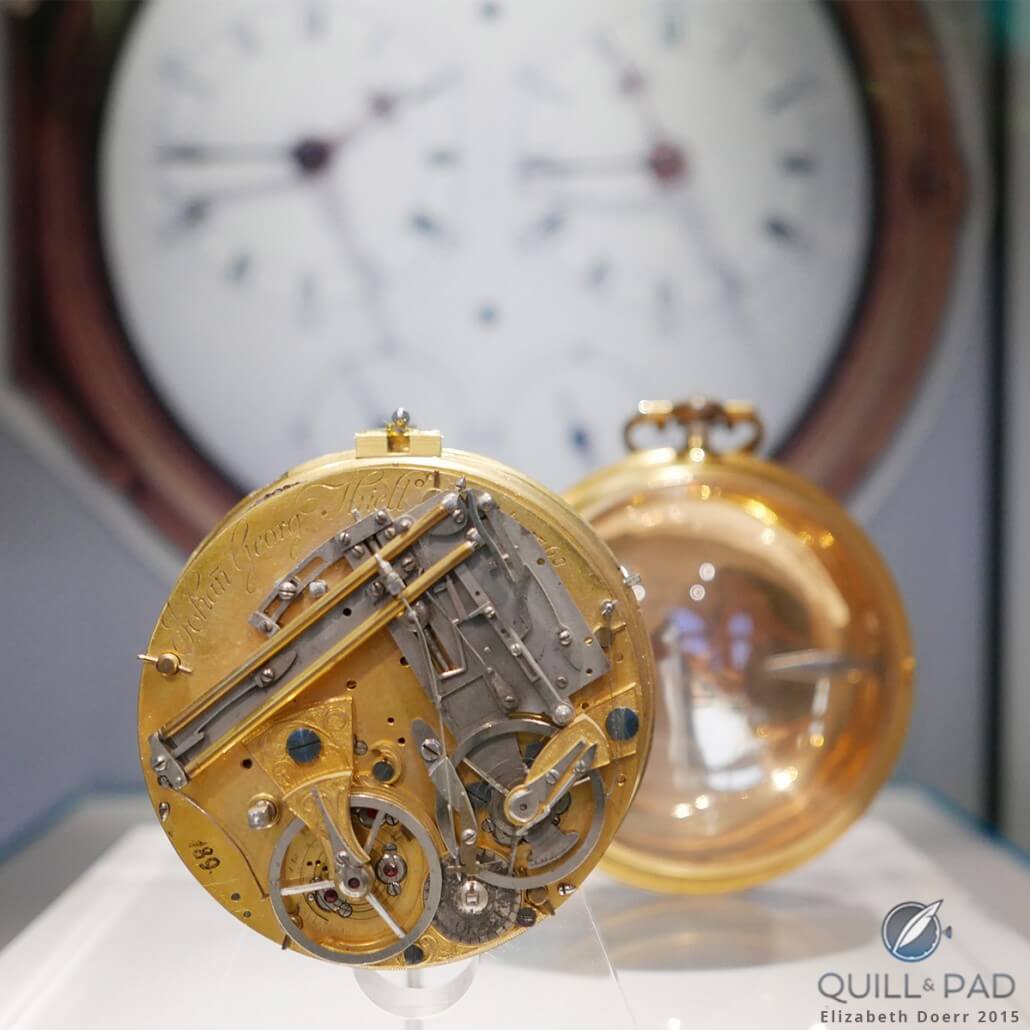
Also on display: chronometer number 1 by Johann Georg Thiell from 1768, the oldest known German marine chronometer
On the eve of the 200th anniversary of Ferdinand Adolph Lange’s birth in 1815, the MPS opened a brand-new and painstakingly detailed exhibition in honor of the birthday of Dresden’s favorite horological son. “Simple and Perfect: Saxony’s Path into the World of International Watchmaking” will run until June 14, 2015.
Comprising more than 80 historically important exhibits and modern didactic tools, the exhibition utilizes the work of three distinguished historical horological sons of Saxony to illustrate the German state’s path to an art of watchmaking that has attained world renown: Johann Heinrich Seyffert (a former MPS inspector), Johann Christian Friedrich Gutkaes (watchmaker to the royalty and Lange’s teacher/”master”), and Ferdinand Adolph Lange.
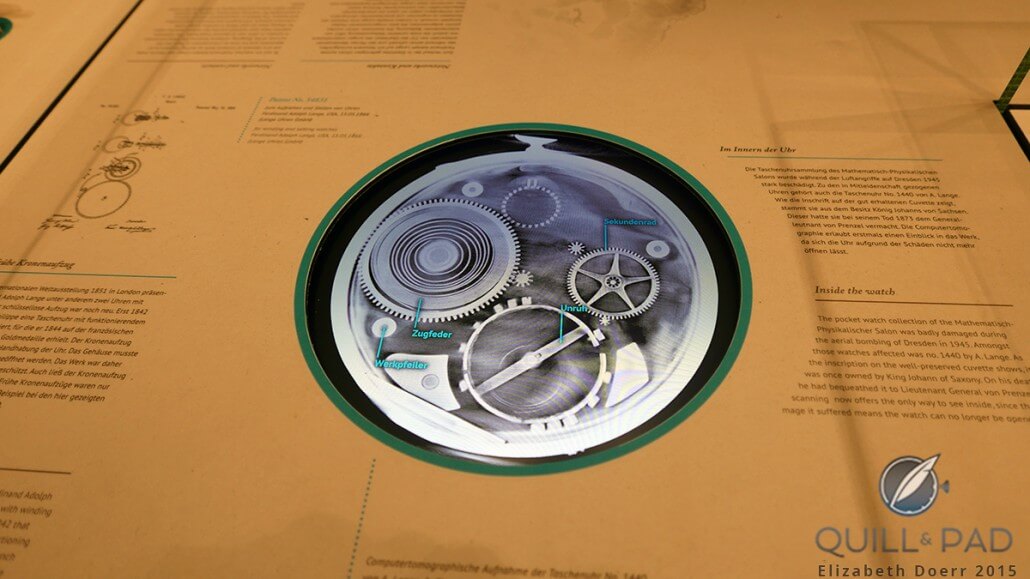
A new way to get an all-important peek at the inside of a fire-damaged watch on display: industrial micro-computed tomography
One of the most notable new techniques on display here is the use of x-ray-computed tomographic images that make it possible to “look” inside some of the important, one-off historical chronometers that were damaged by fire in 1945 – so damaged that they can never be disassembled or they would crumble!
1815 200th Anniversary F.A. Lange
The new watch is a typically stunning example of A. Lange & Söhne’s minimalist style of watchmaking, which is in keeping with the “simple and perfect” theme of the new exhibition.
The commemorative timepiece could be nothing other than an 1815 model, which was originally introduced in the mid-1990s as the fifth timepiece of the modern A. Lange & Söhne collection. The name “1815”says it all, it was created in honor of Ferdinand Adolph Lange’s year of birth.
Though this watch may not seem unduly special from the front, we should bear in mind that the idea of the 1815 line is to be simple, minimalistic and with central rather than off-center (like the Lange 1) indications.
At the time of its original introduction, the 1815 was the entry-level line for A. Lange & Söhne. Today, it shares that space with the Saxonia collection, which, without display of seconds, is even more minimalist than the 1815.
A. Lange & Söhne very, very rarely introduces wristwatches with black dials. This has generally been reserved for the Datograph family and some examples of the Grand Lange 1, such as the Luminous variation.
There is also a Zeitwerk outfitted with a black dial, which is actually minimalized by the large time bridge that takes up quite a bit of dial space, and there are, of course, other special editions. But black in generally not A. Lange & Söhne’s color.
Thus, when A. Lange & Söhne introduces a black dial, it generally becomes not only quite collectible, but also a visual treat.
The 1815 200th Anniversary F.A. Lange, housed in a 40 mm platinum case and limited to just 200 pieces, is available in stores worldwide as of today. My recommendation is to hurry if you’re interested. At this price, it is bound to fly off the shelves.
Quick Facts
Case: platinum, 40 x 8.8 mm
Movement: manually wound Caliber L051.1, 55 hours power reserve
Dial: solid silver and black lacquer with gold rhodium-plated hands
Functions: hours, minutes, subsidiary seconds
Limitation: 200 pieces
Price: €31,000
Trackbacks & Pingbacks
-
[…] exhibition in Dresden’s Mathematisch-Physikalischer Salon (MPS) – the brand introduced a 200-piece platinum limited edition of the 1815 with a deep black lacquer dial to celebrate the date of Ferdinand Adolph Lange’s birth on February […]
Leave a Reply
Want to join the discussion?Feel free to contribute!

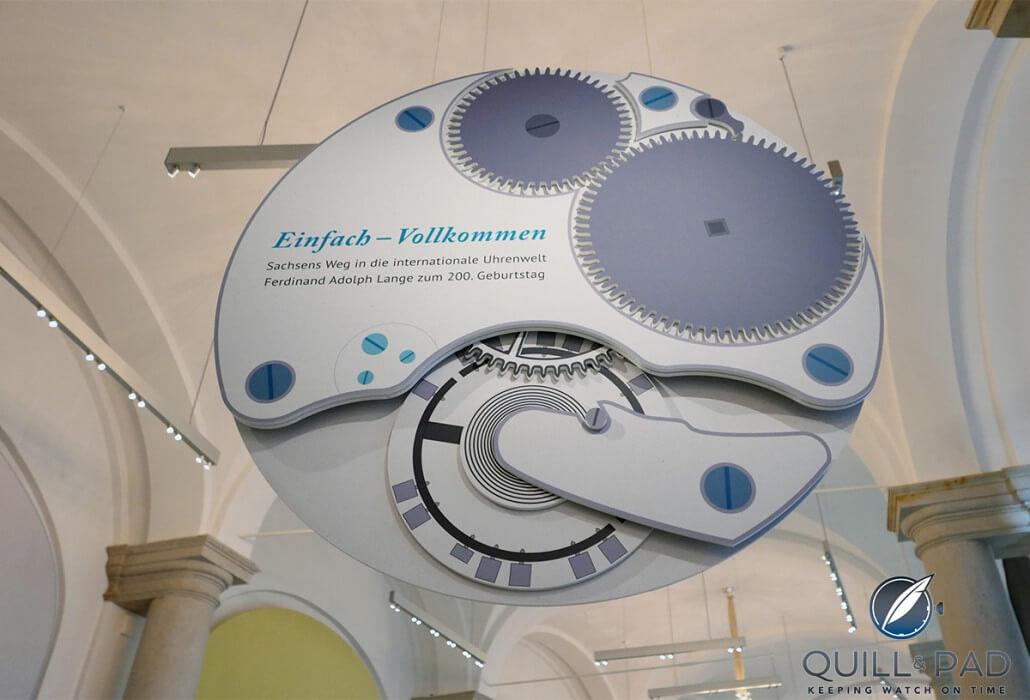
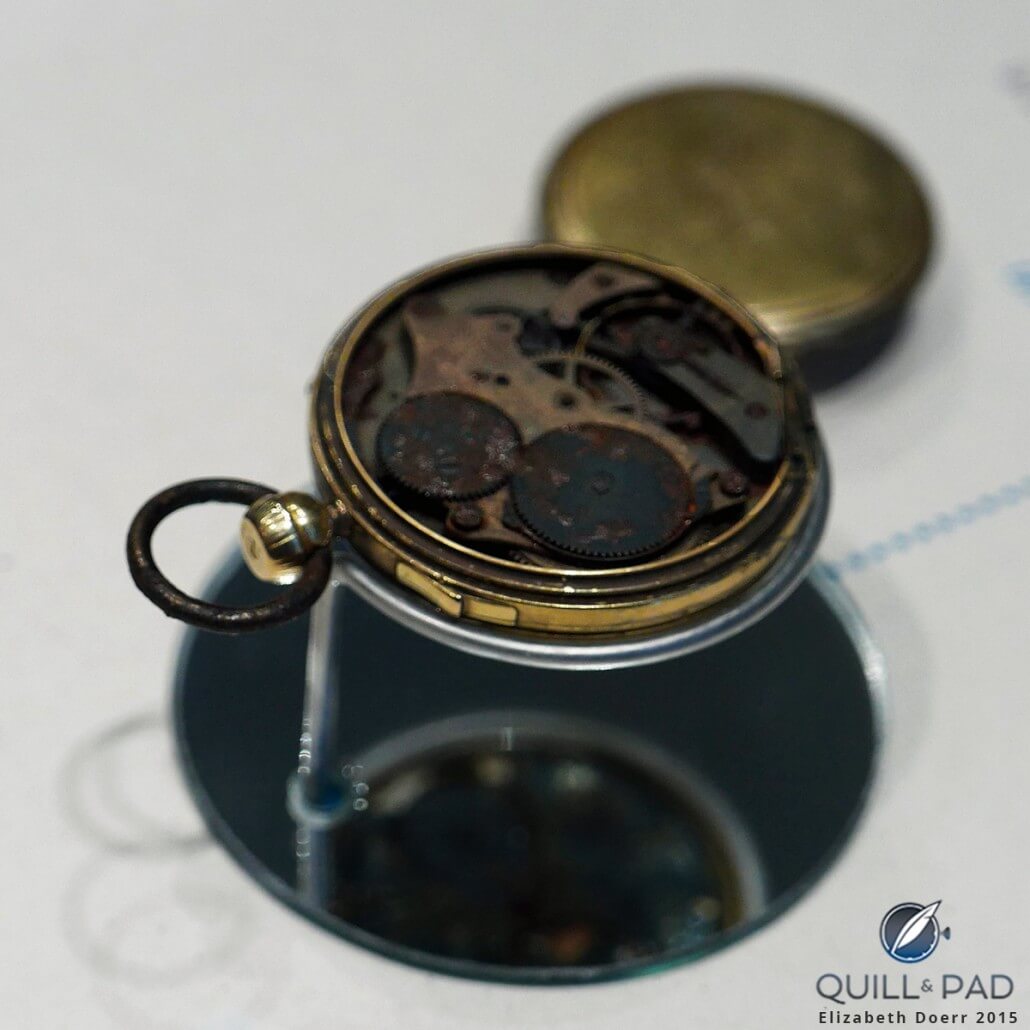
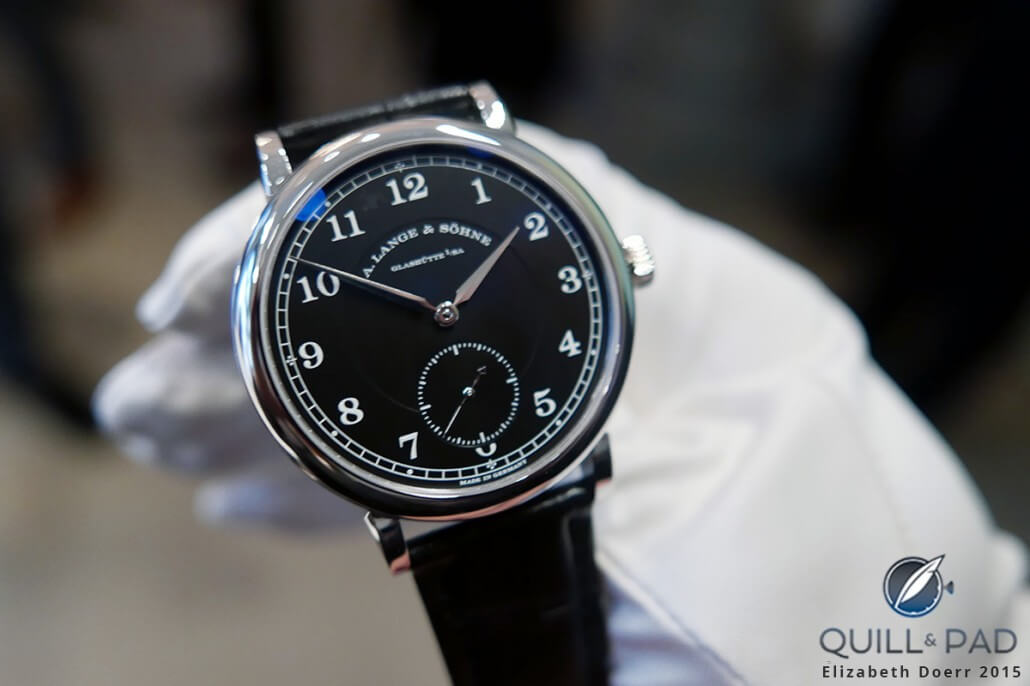


My Grandmother, Katrina Lange, born 1887, was the daughter of the Mayor of Klenec,. She came to America and married my Grandfather in a Chicago suburb, Leopold Tauer, born November 15, 1880 in Klenetsch, who came to America in 1907.
I know much about Leopold Tauer, but very little of my grandmother.
I would appreciate any leads about her.